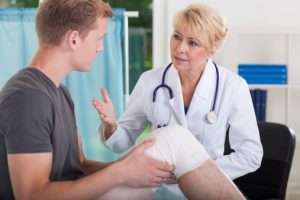
Lead author William J. Hozack explained, “In the past, most surgeons have been reticent to discharge patients directly home after joint replacement surgery if they live by themselves; instead, opting for such patients to enter a rehab facility. However, we found that patients living alone were able to safely recover without any increase in the rate of complications. Even more strikingly, patients were generally happy and content being in the comfort of their own home during recovery.”
The study involved 769 patients who underwent either total hip replacement surgery or total knee replacement surgery. Of the group, 138 lived alone and 631 lived with someone else. Those patients who lived alone were more likely to stay an additional day in the hospital and use more home health services. Of this group, 37.2 percent reported limited support without weekly visits, but 80 percent had a relative or friend who lived close enough to check in on them.
The study also found no reported increases in complications in patients who lived alone compared to those who lived with someone; there was no significant function differences between those who lived alone and those who lived with someone; patient satisfaction scores were similar after 90 days, and lastly, cost savings per patient recovering at home amounted to $10,776. Based on these findings, Hozack suggests, “We believe home discharge is appropriate for the vast majority of patients undergoing joint replacement, including the nearly 20 percent of patients living on their own.”
Hozack also commented on another study looking at the rehabilitation hospitals. That study highlighted an alarming rate of adverse effects experienced by patients in rehabilitation facilities across the U.S. Combined with the latest findings, this evidence offers a strong case for total joint replacement patients to recover at home for optimal success.
Related: Simple exercises for joint pain relief